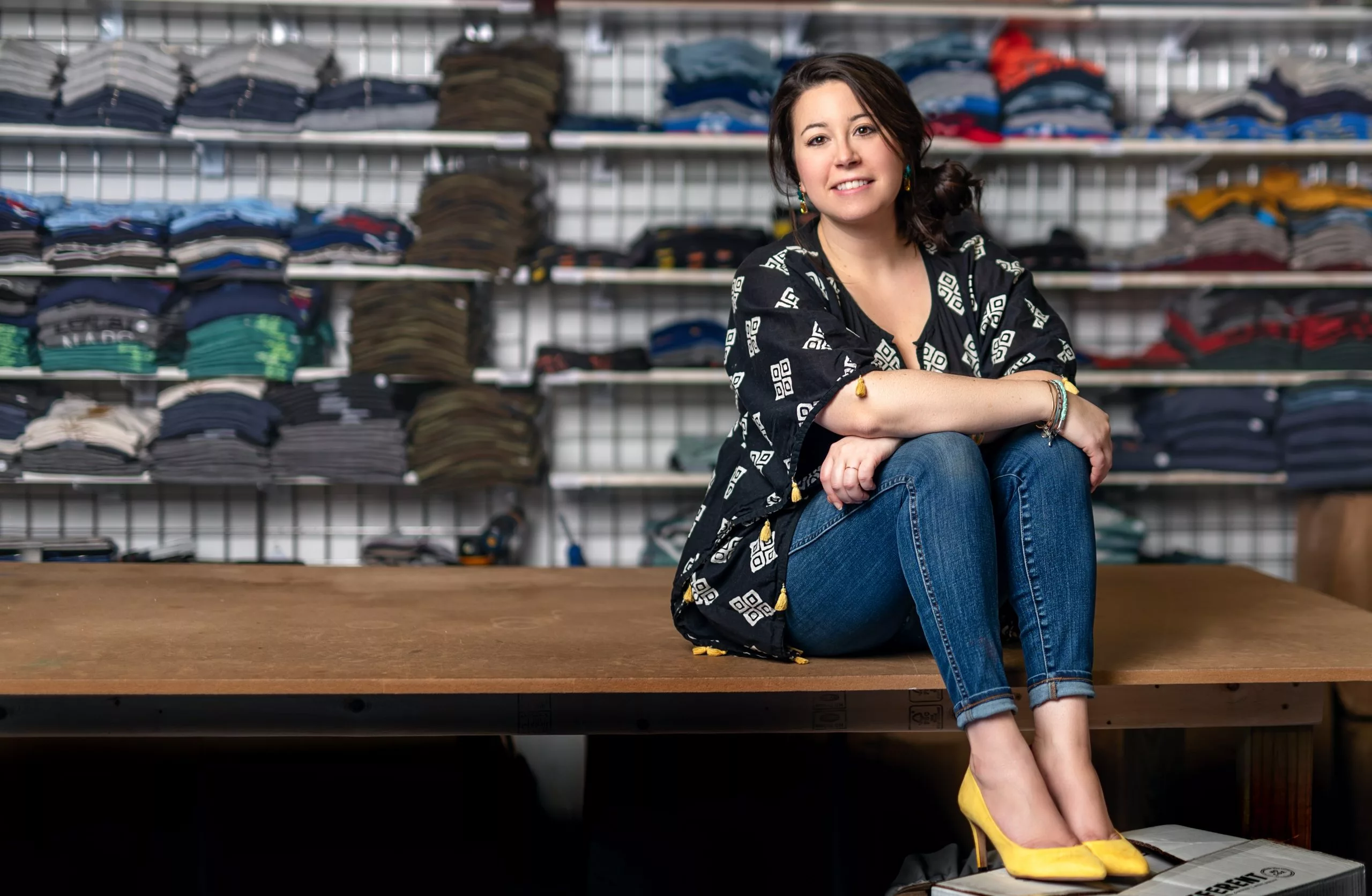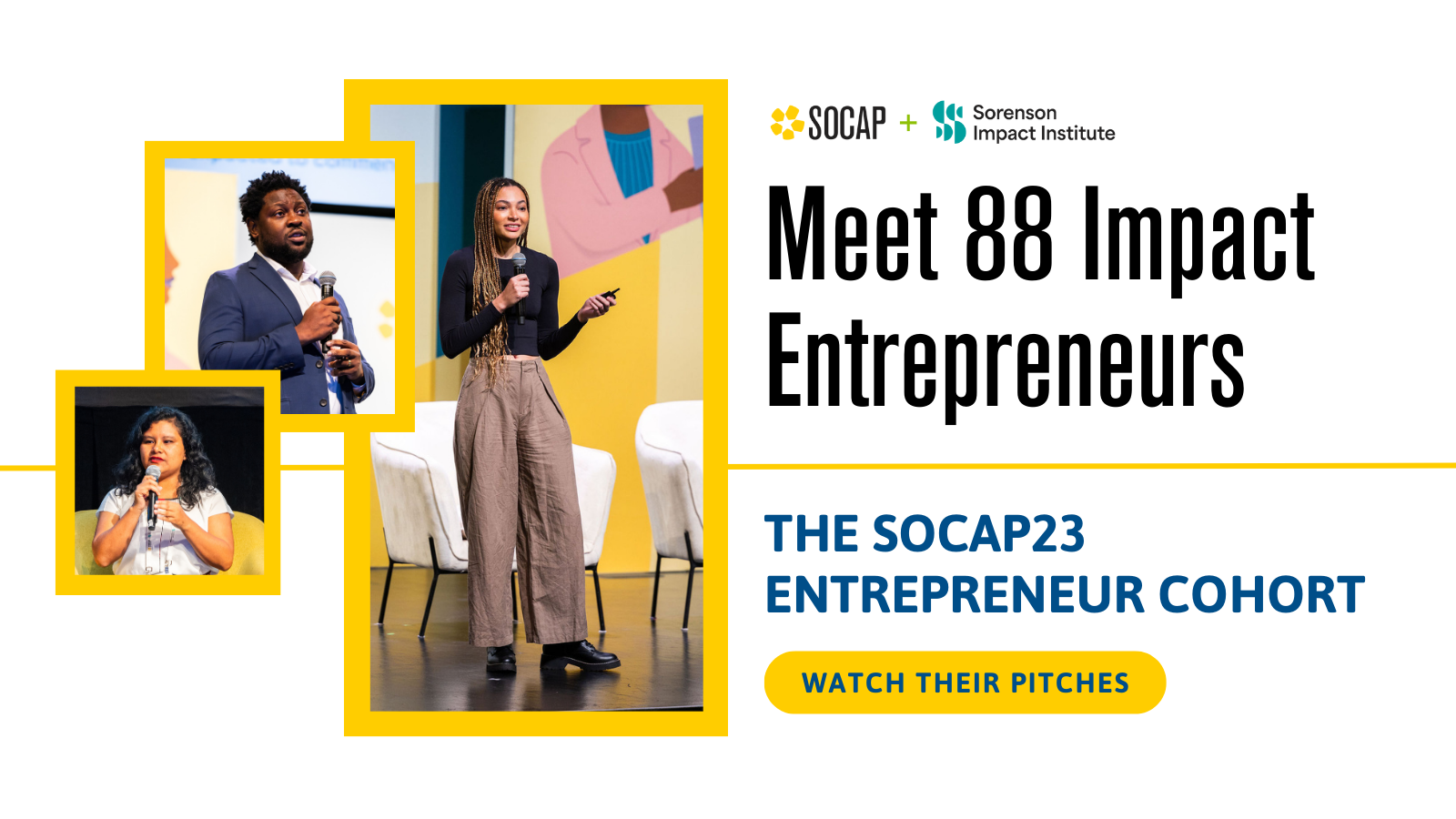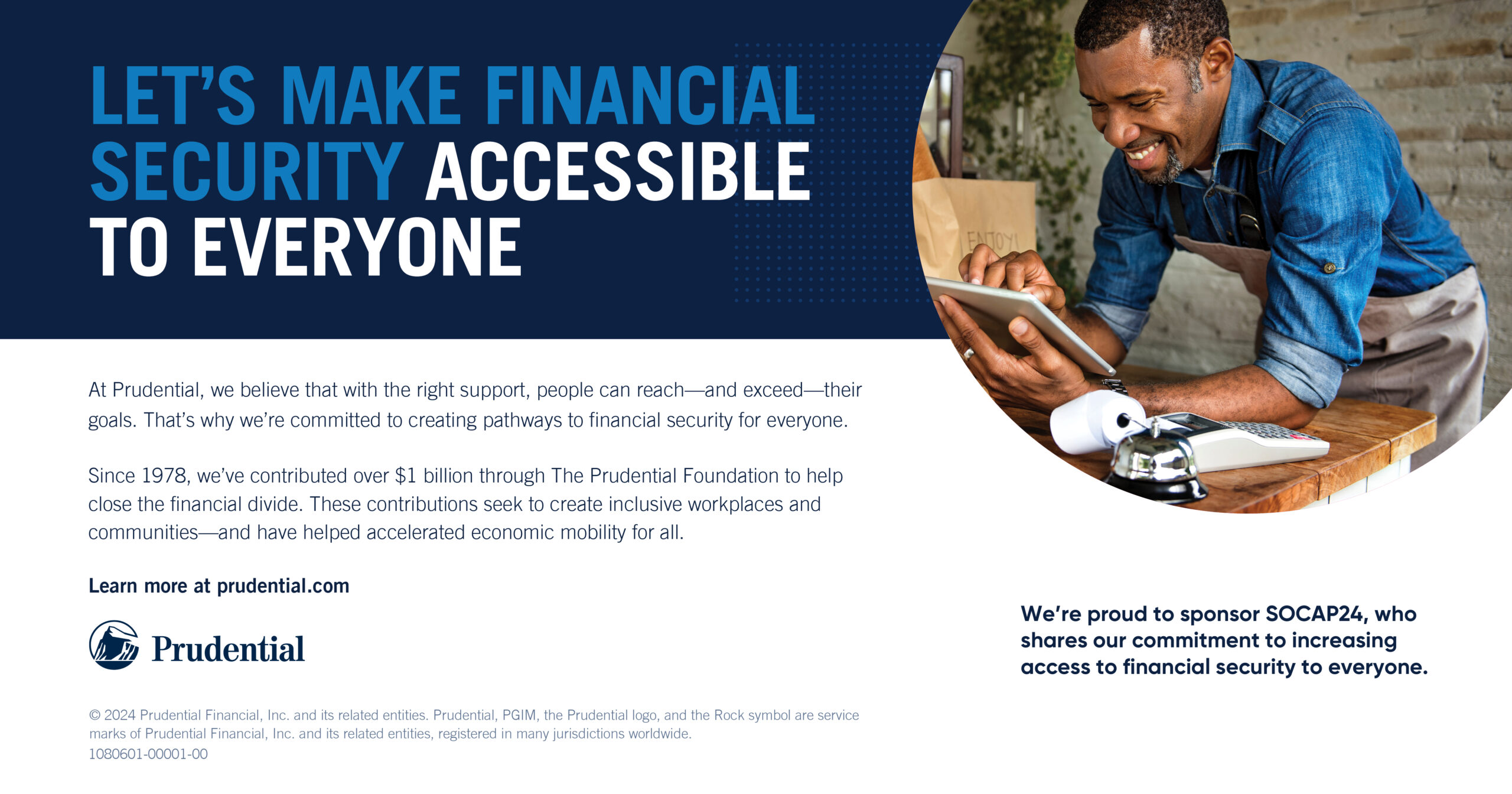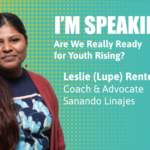“Luxury to me is not about buying expensive things; it’s about living in a way where you appreciate things.”
Ocar de la Renta
It would be hard to deny the importance of the Maker Movement over the past 10 years, particularly when you combine it with the rise of the Shop Local movement. Rooted in the philosophy that we are all makers and connected to our deep sense of supporting our local communities, purchasing products made by artisans who live our towns gives us a sense of community. For many of us, gone are the days of catching sales at the mall, replaced by burgeoning downtowns and revitalized main streets.
We know that shopping local is better for the environment and your community, small businesses are linked to higher income growth and lower levels of poverty, and, in general, smaller businesses are more dedicated to and representative of the culture and diversity of a community. When I buy a pair of earrings made in my town by a local gemstone artist, I know that I am supporting her family and honoring her art. It feels good. And we like to feel good.
And for a few years, that was enough. Leaning into the culture of makers, we purchased gifts and home decor from stores owned by people we saw at cultural events and in the car line. We patted ourselves on the back for making the hard choice of spending more to support someone we believed in. Not just in our own towns, either. When we traveled, we looked for locally owned places to get coffee, buy our souvenirs, and try a new craft beer. It gave us hope. We believed that we were doing our part to make the world a better place and so the world would become a better place.
At the same time, the conversations around climate change have been escalating. As we started making shifts in our homes and lives to be more eco-friendly, we started with these local shops. The first set of metal straws I bought was from a store in downtown New Haven, CT. The first natural laundry detergent from a store in Bar Harbor, ME. The first bar of natural soap from a store in St. Augustine, FL. We demanded more sustainable products and the makers and curators of these shops supplied them – and still do. But they were offering them (for the most part) alongside products that weren’t sustainable or eco-friendly. Finding a store that was focused on those products would most likely take you from the cute trendy boutique to an earthy off-the-beaten-path store – places we didn’t feel we belonged.
Numerous studies have been done that show that there is a strong link between aesthetics and community. Beautiful brightly lit stores full of eco-friendly clothes with fun sayings, dish towels made out of flour sacks, and gold metal straws assure us that saving the planet is fun and worth whatever it costs (in money). Perhaps it also gives us a feeling of doing enough, instead of being overwhelmed by how hard it feels to make a difference. But feeling like we are already doing enough is never going to create a shift in our culture. Purchasing eco-friendly slogan t’s while being overwhelmed by recycling isn’t going to save our planet.
What we need is a shift in our culture to a place where we are conscious of every decision we make and how it affects the environment. This is the next evolution in the Makers/ Shop Local Movements. For some, unfortunately, it may be a long way off still. If you live in Middletown, Connecticut, it is right in your downtown.
Rachel DeCavage founded cinder + salt as an eco-friendly clothing and lifestyle brand in 2014 with the goals of providing meaningful jobs for artists, having a minimal carbon footprint, and creating unique, stylish and attainable design items to wear, use, decorate and gift. In 2017, she shifted the store’s messaging away from being eco-friendly to being a beacon of eco-optimism. And she went all in – not just on her own sustainability practices, but also on shifting the culture of her patrons.
All the products are hand-printed by her using her original designs and recycled inks in her zero-waste print shop. (Any waste created by the print shop is upcycled into coral reef sculptures and she uses simple recycling to turn fabric waste into housing insulation.) She also funnels 50% of her profits back to the earth through a variety of eco-initiatives.
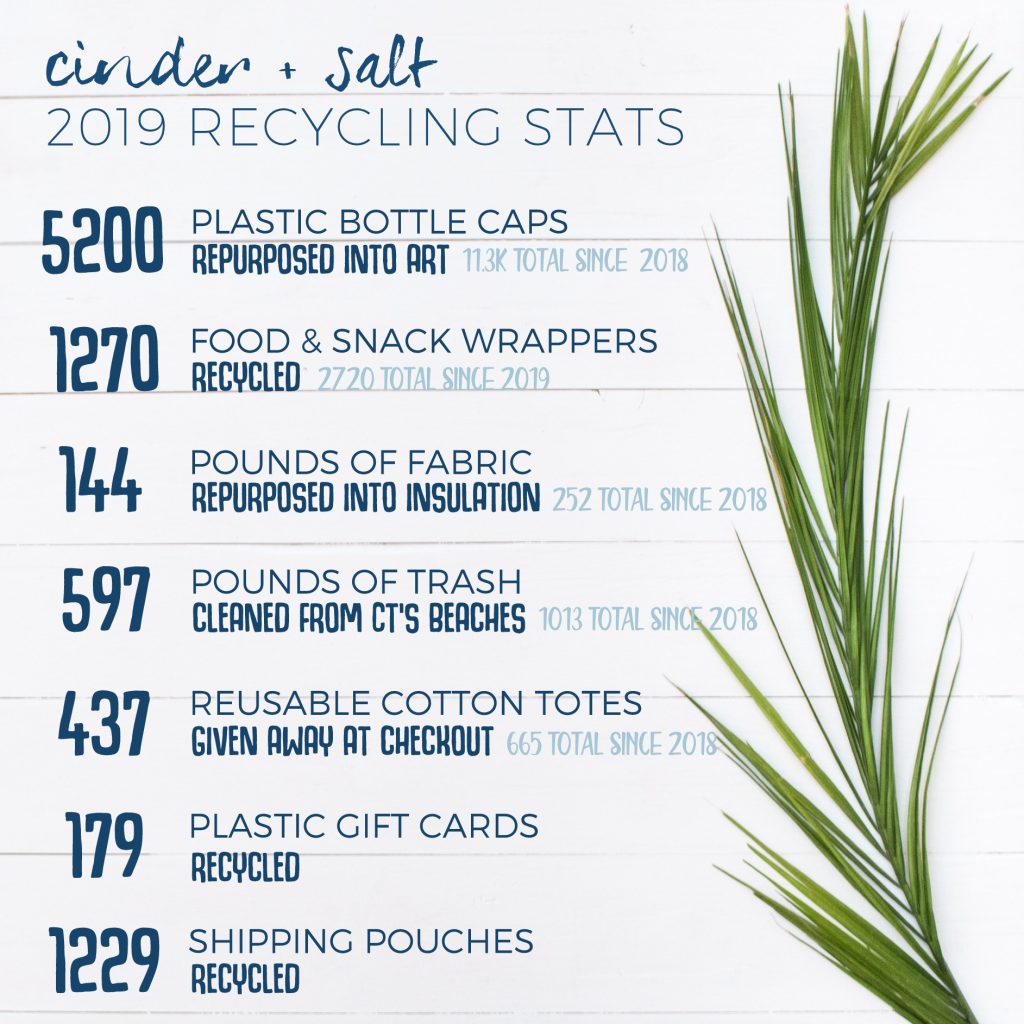
She hosts workshops beach and trail cleanups, and quarterly sustainability happy hours. She is creating a 14 foot wide and 8 feet tall world map from plastic bottle caps (which she collects at her store from shoppers) in response to the Great Pacific Garbage Patch and the incessant wave of plastics that land in our oceans every day. All of this is part one of her two-pronged approach to inciting the shift in culture that she wants to see: You have to give people a reason. She believes that reminding people of how beautiful and wonderful natural is (and can be) will make them want to shift their lifestyle towards sustainability.
But that’s not enough. Rachel knows we have to also make it accessible. We have to make it easy for people. As she says, “It’s not enough to show someone a photo of a sea turtle and hope they will care about sea turtles. We have to go to the next stop and show them a photo of a sea turtle with a straw in their nose and then show them 10 different options for reusable straws so they can be part of ensuring no more sea turtles have straws in their noses.” She also encourages her shoppers to bring in un-recyclable items, and she uses them to make new things – art, products, or displays.
This two-pronged approach is not just about shifting the culture of her shoppers; it’s also about maintaining a sustainable business. She knows that to keep creating the change she wants to see, she has to stay in business. So she does encourage those who can to purchase their sustainable products from her and helps those who can’t. When Middletown passed a Bring Your Own Bag ordinance in 2019, making the use of single-use plastic bags illegal and requiring retailers to charge 10 cents for paper bags, she instituted the Leave a Bag | Take a Bag campaign. For anyone (like me!) who has an inordinate number of reusable bags lying around, they can leave them at a bag station at cinder + salt. For anyone who needs a bag and can’t afford them, they can take a bag from the station.
I asked her what her dream level of impact would be. She said, simply, “to shift the mindset of others.” From inspiring people to live more sustainably to showing them how simple it can be to proving to a new entrepreneur that you can make money + do good, she’s on a mission to prove to the world all that is possible – with just a small shift in culture.
Join the fun at cinder + salt or @cindersalt on Instagram.
